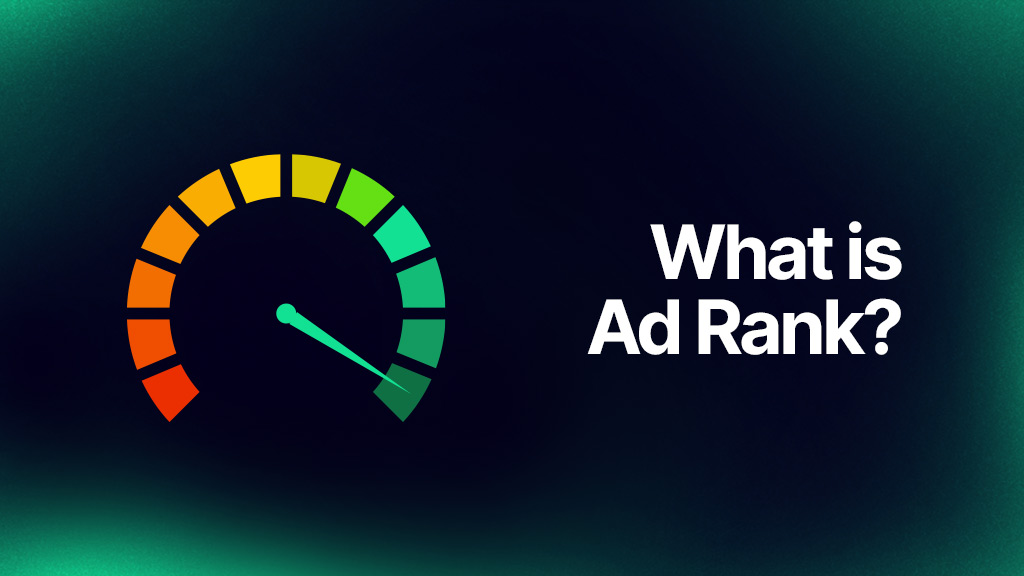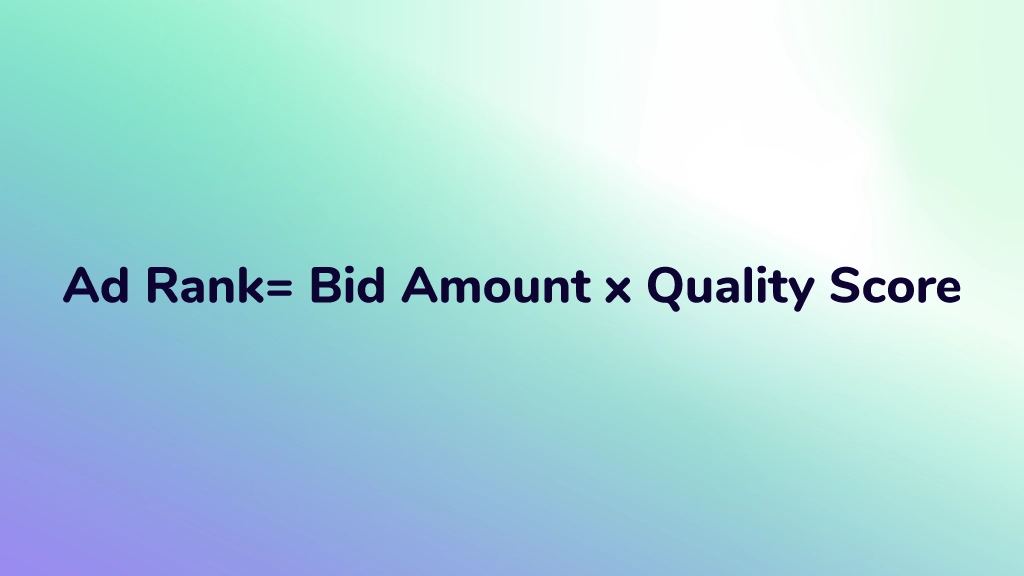What is Ad Rank?

Table of Contents
- How is Ad Rank determined?
- How is Ad Rank Calculated?
- How to Improve Ad Rank?
- How Does Quality Score Affect Ad Rank?
In digital marketing, where the competition for online visibility is intense, advertisers face the challenge of ensuring their messages reach the right audience at the right time. In this dynamic environment, the concept of Ad Rank emerges as a critical factor of advertising success. But what exactly is Ad Rank, and why does it matter?
Ad Rank is more than just a number; it’s the algorithmic heartbeat that regulates the positioning of ads on search engine results pages (SERPs). As businesses compete for attention in the crowded online marketplace, understanding the specifics of Ad Rank becomes a strategic necessity.
In this journey, we’ll explore Ad Rank, diving into its components, understanding the calculation process, and providing practical strategies to optimize its potential. Whether you’re a seasoned advertiser refining your tactics or a newcomer navigating the digital advertising field, you’ll learn about the details of Ad Rank and optimize your advertising strategy. Let’s dive into specifics and make your ads not only visible but also effective.
How is Ad Rank determined?
Now that we’ve understood what it is, let’s look at how Ad Rank decides where your ad shows up. It’s like a judge looking at several Ad Rank factors to determine which ads deserve the spotlight. Here’s the overview of what Ad Rank takes into consideration;
Bid Amount
This is where the financial part comes in – how much you’re willing to pay for a click. However, it’s important to note that while your bid matters, it’s not the only factor determining your ad’s destiny.
Quality Score
Quality Score plays a significant role in Ad Rank determination. It’s like a report card for your ad’s performance, considering factors like relevance and the overall user experience after clicking. A higher Quality Score can significantly influence your Ad Rank, emphasizing the importance of delivering content that is relevant to your audience.
Ad Extensions
Ad extensions are like bonus features that can improve your ad’s appeal. Adding extra information, such as site links or contact details, contributes to user experience and can positively impact your Ad Rank.
Ad Formats
The way your ad is presented is also important. Ads that are closely related to what users are searching for have a better chance of achieving a higher Ad Rank.
Understanding these components provides a roadmap for advertisers to optimize their strategies. It’s about creating ads that are not only financially competitive but also engage with users, providing a positive and relevant experience.
How is Ad Rank Calculated?
Now that we’ve uncovered the key factors in the Ad Rank, let’s look at how these factors come together in the calculation process. Understanding this formula is essential for advertisers looking to improve their strategies and optimize their Ad Rank effectively.
Ad Rank Formula

Ad Rank is calculated at its core by multiplying your bid amount by your Quality Score. Here’s the formula;
Ad Rank=Bid Amount×Quality Score
Understanding the Ad Rank formula is like having a secret map to navigate the digital advertising field. It reveals that it isn’t just about having the biggest bank account; it’s about finding the sweet spot between budget and ad quality.
How to Improve Ad Rank?
Now that we’ve learned the Ad Rank formula, let’s dive into actionable strategies to elevate your Ad Rank. Whether you’re aiming for a better ad position or seeking more cost-effective clicks, these tactics can help you improve your approach and maximize your advertising budget.
1. Optimize Bid Strategies
Regularly review and adjust your bid strategies based on performance data. Finding the right balance between competitiveness and budget is key. Experiment with bid adjustments to find a balance that maximizes your Ad Rank without costing you a fortune.
2. Refine Ad Content
Creating engaging ad copy is important. Ensure your ads align with user intent and highlight your unique selling points. Include relevant keywords naturally within your copy to improve your ad relevance. A well-crafted ad not only attracts clicks but also contributes to a higher Quality Score.
3. Leverage Ad Extensions
Take advantage of ad extensions to provide additional information and improve the user experience. These extras can make your ad more engaging and improve your Ad Rank, whether it’s site links, callout extensions, or location details.
4. Improve Landing Page Experience
A seamless transition from the ad to the landing page is essential. Make sure your landing pages are user-friendly, relevant to the ad content, and optimized for both desktop and mobile devices. A positive landing page experience can lead to a higher Quality Score and, as a result, a better Ad Rank.
5. Monitor Historical Performance
Monitor your Ad Rank and keep an eye on your historical performance metrics, including click-through rates (CTR) and conversion rates. Ads with a track record of delivering positive user experiences will likely achieve higher Ad Ranks. Identify successful strategies and apply them across your campaigns.
6. Stay Relevant
Regularly update your keywords and ad content to stay relevant to your target audience. Anticipate changes in user behavior and adapt your campaigns accordingly. Staying on top of trends ensures your ads remain aligned with what users are actively searching for.
By incorporating these strategies into your advertising approach, you can find a way to improve your Ad Rank. Remember, it’s not just about bidding high; it’s about presenting compelling content, providing a positive user experience, and staying on top of the ever-changing digital landscape.
How Does Quality Score Affect Ad Rank?

Let’s break down how Quality Score affects where your ads show up. Quality Score is like the judge that decides if your ad is worthy of being at the top or hidden in the digital shadows. Here, we’ll focus on how Quality Score impacts your Ad Rank, especially on Google Ads.
Quality Score is not just a score; it’s a game-changer for your Google Ad Rank. When your ad competes for a spot, your bid gets multiplied by your Quality Score. Increasing your Quality Score makes your Ad Rank higher. Even if your bid isn’t the highest, a strong Quality Score can push your ad to the top.
In conclusion, understanding and mastering Ad Rank is essential for advertisers looking to optimize their digital advertising efforts. By focusing on bid strategies, ad content, and Quality Scores, businesses can gain a competitive advantage, resulting in better visibility and more effective campaigns in the ever-evolving landscape of digital marketing.

How to Increase Ad Rank?
To increase your Ad Rank, optimize your bid strategies, refine ad content, and leverage ad extensions. Improve landing page experiences, monitor historical performance, and stay relevant with updated keywords. These steps enhance your ad’s competitiveness, visibility, and overall performance on platforms like Google Ads.
Why do your New Google Ads have a Low Ad Rank?
New Google Ads start with a lower Ad Rank due to limited data. Optimize bid strategies, refine ad content, and use relevant keywords to improve. As your ads perform better over time, Ad Rank is likely to increase. Regular monitoring and adjustments are crucial for competitiveness.



